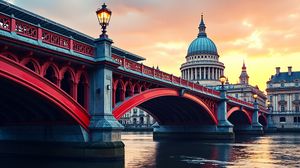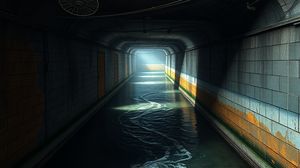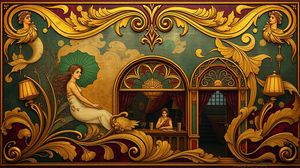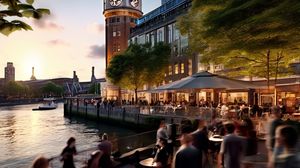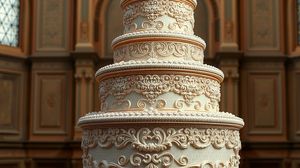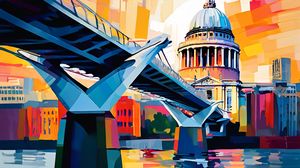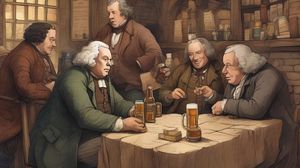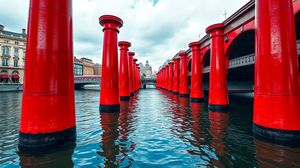
The Blackfriars Bridge Pillars in London are remnants of the former Blackfriars Railway Bridge, which once spanned the River Thames. This unique and historic site is characterized by the striking set of red pillars standing in the water next to the current railway bridge. These pillars were part of the original structure, built in the 1860s and designed by Joseph Cubitt and F.T. Turner. Though the bridge was dismantled in the 1980s, the pillars were retained and now serve as a visual reminder of the city's rich engineering history.
One interesting aspect of the Blackfriars Bridge Pillars is their striking color. The vibrant red hue of the pillars stands out against the river's backdrop, making them a popular subject for photographers and history enthusiasts alike. This vivid color is not just for aesthetics; it was chosen to enhance the visibility of the pillars in foggy conditions, a practical consideration given London's notorious mist.
The location of these pillars marks a once bustling hub of railway activity along the Thames. The bridge was originally constructed to support increased rail traffic, reflecting the rapid expansion and industrialization of London during the Victorian era. The removal of the bridge itself was necessitated by its inability to support modern railway loads, but the pillars remain as a testament to the impressive engineering feats of the time.
What adds a touch of intrigue to the Blackfriars Bridge Pillars is their unexpected adaptation over time. While serving no current railway function, the pillars have become an attraction in their own right. Occasionally, they are used as a canvas for art installations, highlighting London's vibrant arts scene and the city's ability to blend historical elements with contemporary culture.
Despite their seemingly inconsequential current role, the Blackfriars Bridge Pillars have witnessed significant events in London's history. From the days of industrial expansion to the capital's ever-evolving skyline, these remnants tell a silent story of change and resilience that continues to captivate visitors and locals alike.

Making the Most of Your Visit:
Get your camera ready, because the Blackfriars Bridge Pillars look fantastic when photographed with the river mist swirling around them, especially during early morning or late afternoon light. Try capturing the reflections on the water or the striking contrast between the red pillars and the background cityscape.
Keep an eye out for art! These pillars have been used for art installations in the past, so there's always a chance you might stumble upon a unique artistic expression. It's a reminder of how London creatively intertwines its history with modern culture.
Bring a pair of binoculars or a zoom lens if you're interested in structural details. Despite being remnants, the design intricacies from the 1860s are still visible, and you can appreciate the craftsmanship that went into these supports.
If you're a history enthusiast, take the time to think about what these pillars represent. They are silent witnesses to the bustling industrial age of the 19th century. It's worth reading a bit about Joseph Cubitt and the Victorian era railway expansion for a richer experience.
Lastly, consider pairing your visit with exploring the nearby Bankside and the Blackfriars Railway Station which offers spectacular views of London, perfectly representing the blend of old and new the city is so famed for.

Visiting Times & Costs:
The Blackfriars Bridge Pillars are not an attraction with specific opening hours or an entrance fee. As these are remnants of the old Blackfriars Railway Bridge standing in the River Thames, they can be viewed from nearby locations at any time.
Accessibility: The pillars themselves are not accessible as they are situated in the river. However, they can be observed from the surrounding riverbanks, walks, or bridges. The area around Blackfriars, including Bankside and the Blackfriars Railway Station, is generally accessible, but individual site accessibility can vary for those with mobility issues.
Cost: Free to observe.

Address & Map:

Nearby:
